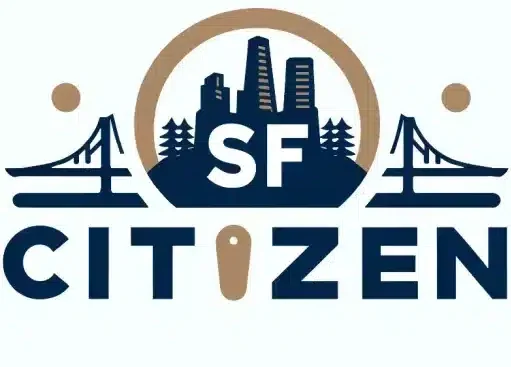Treasure Island, a man-made island in the heart of San Francisco Bay, spans 404 acres and boasts a rich history dating back to the 1930s. Originally constructed for the 1939-1940 Golden Gate International Exposition, this iconic landmark has undergone a remarkable transformation from a U.S. Naval Station to a promising site for housing and economic development. Today, Treasure Island stands as a testament to San Francisco’s resilience and innovation, with ongoing efforts to preserve its environmental and cultural heritage while addressing the city’s pressing housing needs.
In This Article
Key Points
- Treasure Island played a significant role in the 1939-1940 Golden Gate International Exposition and later served as a U.S. Naval Station
- The island is currently undergoing a transition from military use to a promising site for housing and economic development
- Environmental and cultural preservation efforts are being led by organizations such as Citizens for a Sustainable Treasure Island and the community
The Creation and Evolution of Treasure Island
The Birth of an Artificial Island
Treasure Island’s construction began in 1936 and was completed in 1937, using millions of tons of bay sand to create the 404-acre island. The process of building an artificial island in the middle of San Francisco Bay was a remarkable feat of engineering and showcased the city’s determination to host a world-class exposition.
From Exposition to Naval Base
The island served as the site for the 1939-1940 Golden Gate International Exposition, which celebrated the completion of the San Francisco-Oakland Bay Bridge and the Golden Gate Bridge. Following the exposition, Treasure Island was converted into a U.S. Naval Station, playing a crucial role in the Pacific theater during World War II and the Cold War era.
Transition to Civilian Use
In 1996, the naval station closed, and plans for redevelopment began to take shape. The city of San Francisco recognized the potential of Treasure Island to address its housing crisis and create new economic opportunities. The ongoing development projects aim to transform the island into a vibrant, sustainable community with a mix of housing, commercial spaces, and recreational areas.
Treasure Island in the San Francisco Bay Context
A Unique Position in the Bay
Treasure Island’s location in the heart of San Francisco Bay gives it a unique geographic and strategic importance. Connected to Yerba Buena Island and accessible via the San Francisco-Oakland Bay Bridge, the island serves as a gateway to the broader Pacific region and a focal point for the city’s future growth.
Environmental and Cultural Preservation
As development plans progress, environmental and cultural preservation remain key priorities. The Environmental Impact Report (EIR) for Treasure Island’s redevelopment has been the subject of legal challenges, with organizations like Citizens for a Sustainable Treasure Island advocating for a balanced approach to growth. Efforts to protect the island’s ecosystems, historic landmarks, and cultural heritage are ongoing.
Landmarks and Historical Recognition
Treasure Island’s historical significance has been recognized through various designations, including its status as a California Historical Landmark. The Art Deco Society of California and the GGIE Research Associates have played crucial roles in preserving the island’s architectural and cultural legacy, ensuring that its unique history is not lost amidst the redevelopment process.
Economic and Cultural Renaissance
Housing and Economic Development
The redevelopment of Treasure Island presents a significant opportunity to address San Francisco’s housing crisis. Plans for multifamily housing, along with commercial and recreational spaces, aim to create a sustainable, mixed-use community that contributes to the city’s economic growth. The interplay of economic and political forces will shape the island’s future, as stakeholders navigate the challenges and opportunities associated with this transformative project.
Cultural Revival and Community Engagement
As Treasure Island undergoes its renaissance, cultural forces and community initiatives are playing a vital role in shaping its identity. The preservation of historical sites, such as the U.S. Navy Treasure Island Museum, and the promotion of the island’s cultural heritage are essential aspects of the redevelopment process. Community engagement and input ensure that the island’s transformation reflects the values and aspirations of San Francisco’s diverse population.
The Future of Treasure Island
Vision for the Island
The expanding vision for Treasure Island’s development and sustainability is a testament to San Francisco’s commitment to creating a thriving, inclusive community. The State Department of Parks and Recreation, along with other agencies and organizations, are working together to ensure that the island’s redevelopment balances economic growth, environmental stewardship, and cultural preservation.
Challenges and Opportunities
As Treasure Island continues to evolve, balancing development with environmental and cultural preservation remains a critical challenge. However, this challenge also presents an opportunity for San Francisco to create a model for sustainable urban redevelopment, showcasing innovative solutions to the complex issues facing cities around the world.
Treasure Island and Its Place in San Francisco’s Story
A Symbol of Innovation and Resilience
Treasure Island’s journey from an exposition site to a vibrant, sustainable community reflects San Francisco’s spirit of innovation and resilience. As the island transforms, it becomes an integral part of the city’s narrative, symbolizing its ability to adapt, grow, and thrive in the face of change.
Integrating with the Bay Area’s Future
As Treasure Island develops, it will play a crucial role in addressing the Bay Area’s housing crisis and contributing to the region’s economic and cultural landscape. The island’s transformation is not an isolated event but rather a key component of the Bay Area’s ongoing evolution and growth.
FAQ
What was the original purpose of Treasure Island?
Treasure Island was originally constructed to host the 1939-1940 Golden Gate International Exposition, which celebrated the completion of the San Francisco-Oakland Bay Bridge and the Golden Gate Bridge.
How is Treasure Island addressing San Francisco’s housing crisis?
The redevelopment of Treasure Island includes plans for multifamily housing, which will help address San Francisco’s housing shortage and create a sustainable, mixed-use community.
What are the environmental concerns associated with Treasure Island’s development?
The Environmental Impact Report (EIR) for Treasure Island’s redevelopment has been the subject of legal challenges, with organizations advocating for a balanced approach to growth that protects the island’s ecosystems and natural resources.
How can the public get involved with preservation efforts on Treasure Island?
The public can support preservation efforts on Treasure Island by engaging with organizations like the Art Deco Society of California, the GGIE Research Associates, and Citizens for a Sustainable Treasure Island, which work to protect the island’s historical, cultural, and environmental assets.
What are the future plans for Treasure Island’s development?
The future plans for Treasure Island include the creation of a sustainable, mixed-use community with multifamily housing, commercial spaces, recreational areas, and cultural attractions. The redevelopment aims to balance economic growth, environmental stewardship, and cultural preservation, creating a model for sustainable urban development.

